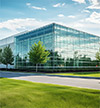Area Development: Can you talk generally about current trends in food processing site selection and how they're impacting the industry?
Scott Kuppermann: Yeah, so I think what I see is indicative of what's been going on probably since COVID. And there's three or four things that I see consistently in terms of what concerns my clients have. One remains that the industry operates on very narrow margins, and there are continued pressures for these companies in the way of increasing costs. So things like cost of transportation, cost of fuel, certainly cost of labor, cost to occupy, build, or modify a building. All those have continued to go up steadily. And then, in order to maintain margins, they have to pass those costs on and do anything they can to remain profitable but still be deemed a product of interest and a good value for the people out there who they're selling it to.
So a lot of what drives the concern from companies who are engaging me relates to, can we find a low-cost and predictable-cost location? They don't like large fluctuations. They want to be in a place where the cost to occupy, stand up, and operate are both predictable and ideally more competitive than other locations where competition and local factors drive up the cost of labor, occupancy, utilities, and all those things significantly. So I think regardless of what product you're making, regardless of what sub-sector of the industry you're in, you are worried about margins, and you're worried about cost, and that's affecting where you want to look. In many cases, it's affecting decisions that relate to consolidation. Do we consider closing this facility that has become a high-cost location or an unpredictable place to operate and either adding on to another facility that we feel is better positioned or maybe opening a new one? That is definitely happening, especially in mid to large size companies that have a network larger than a one or two-facility footprint.
You also see larger companies, the really big conglomerates like Nestle, Hershey, Coke, PepsiCo, Mondelez, Unilever, and Campbell's, trying to figure out how to optimize their portfolio of brands. Many of them have a whole list of products under that major umbrella that surprise a lot of people. We didn't know that Hershey is a big player in popcorn and salty snacks, but they are, and they've done that very purposefully and invested a lot of money in some other companies because they feel they have expertise and synergy and can build up that specific portfolio. At the same time, when they have brands that they don't think align with their growth strategy, they sell them. That may involve raising some cash, diminishing a footprint, trading some real estate, or closing a building. There's a lot of buying, selling, and strategizing out there, which in some cases impacts fairly recently constructed or renovated food buildings becoming available. That's happening a little more, and it tends to happen in higher-cost locations around the country. So it's kind of a double-edged sword. You've got a new building available, which is great news because they're in demand, but it's in a high-cost location. So you have to take that into account.

Another trend impacting site selection is the presence of emerging companies that have figured out a way to make a product that might be more innovative or reach consumers in a way they hadn't been reached before. This could be due to a health, convenience, or faith-based benefit that has suddenly taken off. These companies are now in a position to maybe start making their own product, whereas before they were using a third party. They might want to put a second facility into their manufacturing network, moving from the West Coast to a location closer to population and product growth in the eastern seaboard or the middle part of the country. These are typically smaller scale, more modest investments, just trying to grow market share and fit their brand into another part of the country. In some cases, these companies are coming from overseas, with FDI coming from Europe, Asia, or someplace where they're gaining traction and distribution in the US. They come to the logical conclusion that they can't make their product in Portugal and continue to ship it here; they need to start making it somewhere in the US due to supply chain, quality control, and speed to market. Grocery chains and distributors are also pressuring them to have production here.
Area Development: Are there any geographic areas seeing more growth than others?
Scott Kuppermann: In Food and Bev, you still see a fair amount, especially on the FDI side, going into the mid-Atlantic and Southeast. I think that's largely due to demographic and cost-related trends. It's still seen as a lower-cost part of the country, with a growing population. The region continues to evolve from a diversity standpoint, so you see interest in ethnic or foreign products being distributed on grocery shelves. There's a willingness for chains to stock these products. The cost of land and buildings is still fairly affordable compared to higher-cost metro areas. But again, I'm not the end-all-be-all of what's going on in the industry, but that's what I'm seeing.
Area Development: How are financial aspects, like the cost of capital and access to financing, influencing site selection decisions?
Scott Kuppermann: Certainly, smaller companies, and I'm not talking about startups but established companies, are being ultra-conservative about deploying capital. They're concerned about the predictability of building costs. There's been a lot of waiting on the sidelines for construction costs and interest rates to hopefully go down. But many companies are coming to the realization that we're not going back to 3% debt. Maybe it goes from six and a half to six or 5.75, and construction costs, in large part, are probably going to stay close to where they are long term. Maybe they're stabilizing a little bit, and durations for materials like steel, stainless, machinery, equipment, and utility-related equipment are starting to come down a little. But companies realize that sitting on the sideline isn't going to have a real payoff anytime soon. This is kind of the reality of the cost of capital and construction costs.
Area Development: Which is more important right now to your average company: better incentives or better financing options? Is that dichotomy making a difference?
Scott Kuppermann: I reject the notion of an average company. All economic developers are a little surprised by the range of size, concerns, and factors that drive decision-making among food companies. They're all over the place in size and concerns. Right now, what we haven't talked about is the real lack of real estate solutions. Whether it's buildings or land sites with full or close-to-full infrastructure in place, or even a well-articulated description of what's missing and how to get there in terms of time, cost, and process. Personally, I think this has become the biggest differentiator for me, especially for larger projects. These factors either keep a community in contention or take it out of the running before we even discuss incentives. Smaller companies face the same issues with finishing out a building they luckily found and fitting it within their budget. States are recognizing this and starting to put more money into infrastructure investment, but it's taking time.
Area Development: What are some of the must-have facility features right now?
Scott Kuppermann: For buildings, you want something designed for or previously used in food processing. This means more than just a distribution or shell building. You need different types of utilities, water access, wastewater discharge capabilities, and finishes that are suitable for a food processing environment or can be easily modified to be suitable. Being in a place where it's okay to emit steam or odors, or discharge relatively nasty stuff into the public sewer system, is also important. If these things were happening in the building before, it's easier to assume they can happen again with some modification and permitting. These buildings are few and far between. For sites, the demands are varied but generally include significant power and water needs, sewer capacity, and cost-effective solutions for waste disposal. Communities with a good handle on these factors, and utility and planning teams that understand them, are more likely to stay in contention.
Area Development: Automation is becoming increasingly important to food processors. How is that affecting the search for new or existing facilities?
Scott Kuppermann: Again, it depends on what you're making. There are still smaller to mid-sized companies looking for solutions with relatively little automation, maintaining a process that is labor-intensive, especially for ready-to-eat products. These processes often involve measuring, inspecting, sorting, or other tasks that are hard or expensive to automate. Keeping skilled labor happy and employed is crucial, with pay rates likely in the range of $17 to $21 an hour. In contrast, larger companies with high-speed, large-quantity production rely more on automation. Concerns here include equipment costs, lead times, property and sales tax on equipment, and finding people to operate, optimize, troubleshoot, and maintain automated systems. These jobs are in demand and getting more expensive.
Area Development: Can you talk more about labor shortages and skilled labor and how that's affecting decision-making?
Scott Kuppermann: Many facilities are now considering more rural locations, especially if they can draw from larger population areas within a 20-35 minute range. These locations are becoming viable, with improved workforce training and better pay for skilled technical jobs. Training quality has risen, and these jobs are becoming a viable option for young people who don't want to take on college debt. Keeping skilled employees happy to reduce turnover is essential, as training is expensive and time-consuming.
Area Development: Is sustainability still a big concern for companies?
Scott Kuppermann: It depends largely on the company. Consumer-facing brands are likely to prioritize sustainability, linking it to health benefits and community impact. Larger companies with seasoned HR and government affairs teams can invest more in sustainability and community upliftment. Smaller companies might struggle with these efforts. Some companies are also looking at how state and local politics affect their employees and customers, considering legislation that impacts rights and how it aligns with their brand values.
Area Development: How about federal regulations and the recent Chevron decision from the Supreme Court? Is there any discussion in the industry about how that's going to impact oversight?
Scott Kuppermann: I haven't heard much about the Chevron decision's impact on site selection yet. The food industry is very litigious, dealing with labeling standards and other regulations at both federal and state levels. Some companies have government affairs and legal teams to handle these issues, which take a lot of time and cost. It's a litigious world for many food companies, and while the Chevron decision might become a concern, it hasn't been a significant topic of discussion so far.
The Assignment: Area Development interviewed Scott Kupperman about factors affecting food processing site selection, including cost pressures, geographic preferences, financial considerations, automation, labor shortages, and sustainability. This conversation has been lightly edited for grammar and style.


